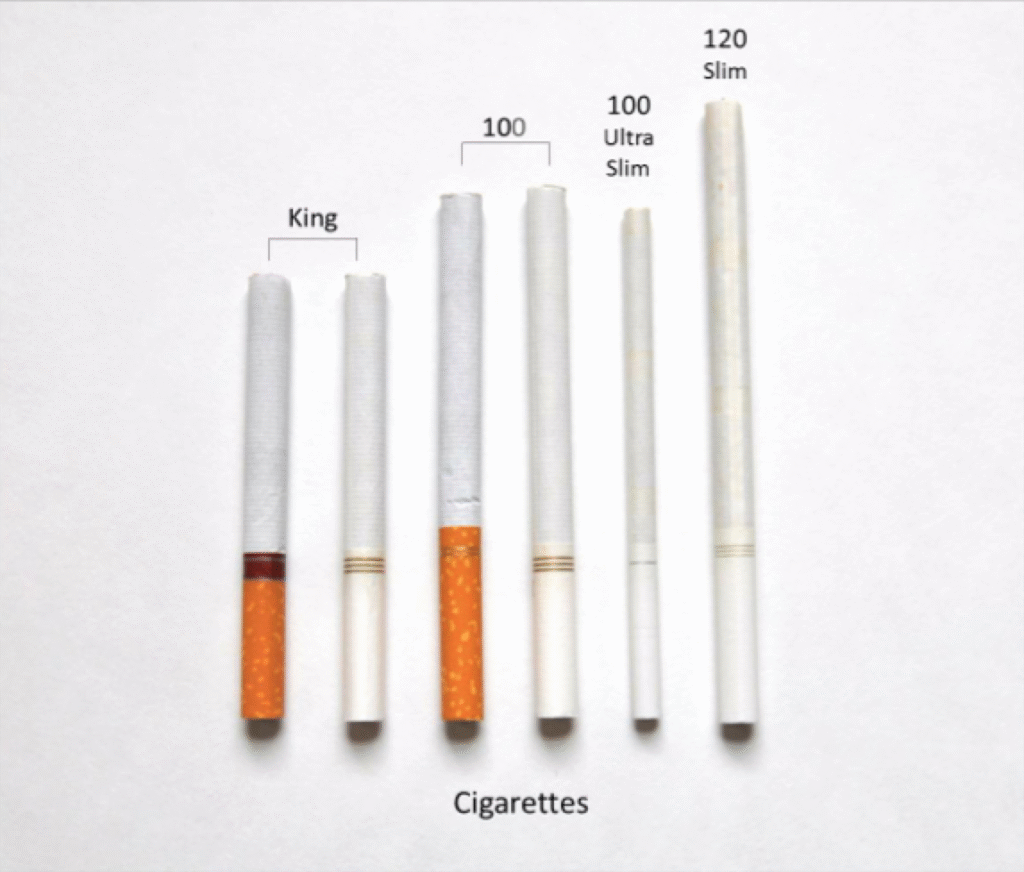
There’s a war going on in the world of cigarettes. It’s the war between 100 Vs 120 cigarettes. The cigarette industry is a diverse one and cigarette sizes vary. There are various sizes of cigarettes just as there are various shoe sizes. The different sizes cater to the preferences of different smokers.
Among the most common sizes are the 100 and 120 cigarette types. They each offer a unique smoking experience. Understanding the differences between these two formats is essential for consumers.
Brief History of Cigarette Sizes
Since their inception, cigarettes have always come in different sizes. Their popularity skyrocketed after the introduction of factory production. Today, we have so many formats, ranging from the classic king size to the eye-catching 120s. The 100s and 120s came up as a creative way to offer a longer smoking experience.
Differences between 100 and 120 cigarettes
In the vast world of cigarette brands and styles, 100s and 120s have carved out their own niche. The impression they give is one with a more elegant, sophisticated aura and they often come wrapped in bold packaging.
1 Length and Dimension
While 100s are typically 3.75 inches long, the 120s stretch to 4.7 inches, giving them a distinct look. They both generally have their own vibes. Popular brands like Marlboro, Camel, and Virginia Slims have embraced these lengths, offering touchpoints for those who enjoy a longer draw.
Understanding Cigarette Measurements (Standard Lengths and Sizes)
Typically, the lengths of cigarettes can be categorized into standard sizes. A traditional king-size cigarette is usually about 84mm in length, while the 100s clock in at 100mm, and the 120s extend the party to 120mm.
In smoking circles, this 16mm difference might seem trivial, but for those who smoke and who count down the seconds until their next break, it’s a whole extra drag. So, size does truly matters.
2 Volume and Tobacco Content
Larger cigarettes don’t just look different; they’re also packed with different amounts of tobacco. The 120s generally contain more tobacco than the 100s, leading to a fuller smoking experience.
However, because a cigarette has more tobacco doesn’t necessarily mean it has a stronger hit. The additional volume is just a larger canvas for the blend, letting manufacturers showcase their specific flavors.
3 Composition
Ingredients and Additives
Both 100s and 120s are not created equal. Cigarette manufacturers often include various additives to enhance flavor or shelf life. For instance, menthols can come in both lengths, and this adds a refreshing kick. Some longer cigarettes might even contain additional layers of flavor or aroma to enhance the experience.
Tar and Nicotine Levels
The tar and nicotine content in cigarettes can also vary based on length. Generally, 120s may have slightly higher levels of both due to the additional tobacco content.
Before you make your next purchase at your local convenience store, consider your priorities. Are you after a quick smoke on the go, or are you looking to indulge in a more leisurely experience? Whether you choose to go for the classic 100 or the extravagant 120, make sure your choices reflect your lifestyle and what you genuinely enjoy. Happy smoking – 100 Vs 120 Cigarettes!

 No products in the cart.
No products in the cart.